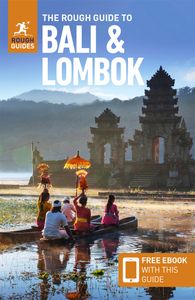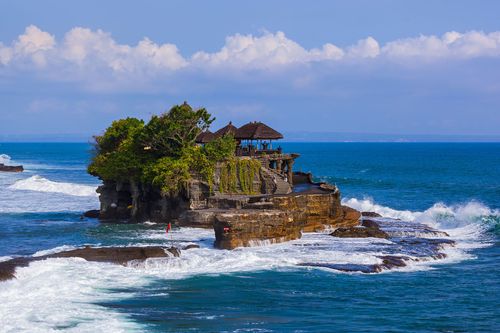Best time to visit Jakarta
The best time to visit Jakarta is from May to September when the weather is dry and pleasant. Temperatures during this time average between 24°C and 32°C. June to August is the city's high season, when domestic tourists visit the city for their holidays. Prices for flights, hotels, and attractions tend to be higher. Peak tourist season in Jakarta coincides with the Christmas and New Year holidays, as well as the Eid al-Fitr and Eid al-Adha celebrations in the Islamic calendar. Expect crowded streets, busy markets, and long queues at popular attractions.
The wet season in Jakarta lasts from October to April, with heavy rainfall and occasional flooding that may disrupt travel plans. Air pollution from traffic congestion is a persistent issue in Jakarta. It's worst in September, during the peak of the dry season in September.
Find out more about the best time to visit Indonesia.
How to get to Jakarta
Indonesia has a vast domestic flight network, of which Jakarta is the main hub. The increase of cheap flights has reduced the number of ferries servicing the city. However, there are still plenty of those too. Trains and buses come from all across the island and both are cheap.
By air
The vast majority of long-haul international flights arrive either at the huge and recently upgraded Sukarno-hatta international airport (also spelled Soekarno- Hatta), 20km (13 miles) west of Jakarta on Java.
By boat
PELNI (Pelayaran Nasional Indonesia), the state-owned shipping company, serves Jakarta from scores of ports across Indonesia. In bad weather, especially during the rainy season (Oct–Apr), the seas can be quite rough, particularly between Sumatra and Java. All ferry runs may be cancelled. Enquire at the local ticketing office, 1.5km northwest of the Monumen Nasional in central Jakarta.
By bus
Java’s main highways are well maintained, and there are increasing numbers of fast intercity toll roads. Off the main routes expect a few potholes. Intercity buses in Java are generally comfortable modern coaches with air-conditioning, and increasingly often with Wi-Fi. Smaller, less comfortable buses provide links to smaller towns and rural areas. Jakarta has three main terminals: Kalideres Terminal (west Jakarta) operates services to Sumatra and West Java; Kampung Rambutan Terminal (in northeast Jakarta, near the old Halim Airport) is the hub for services to Bandung, Bogor and southwards; while Pulo Gadung Terminal (Jl. Bekasi Timur Raya) has services heading to Central and East Java.
By train
There is a reasonable railway network in Java, including four main train stations in Jakarta. Train travel here is cheap and connections include Bandung, Malang, Semarang, Solo, Surabaya and Yogyakarta.

























